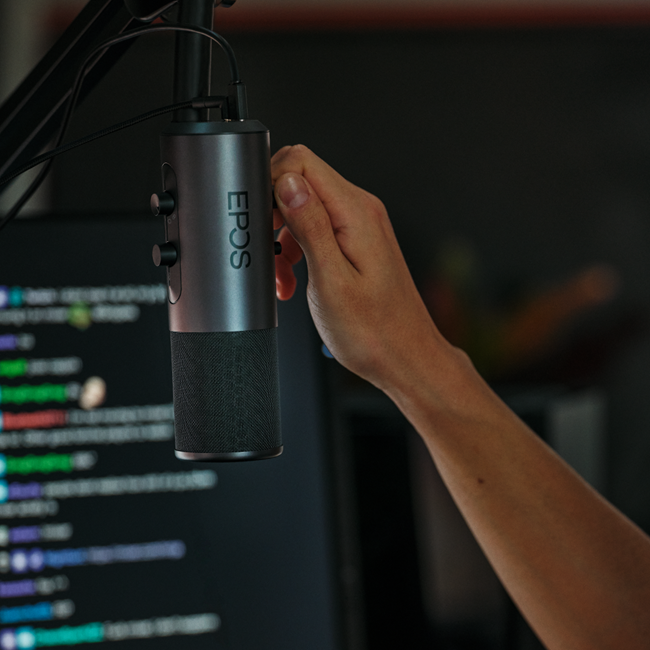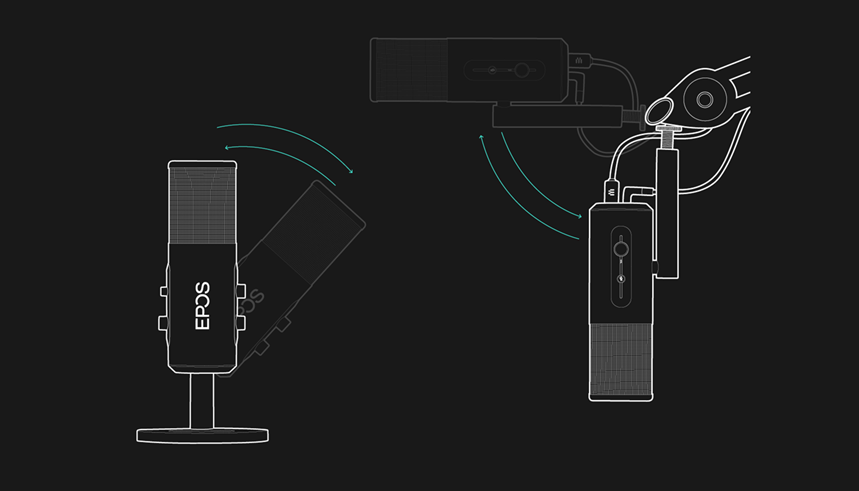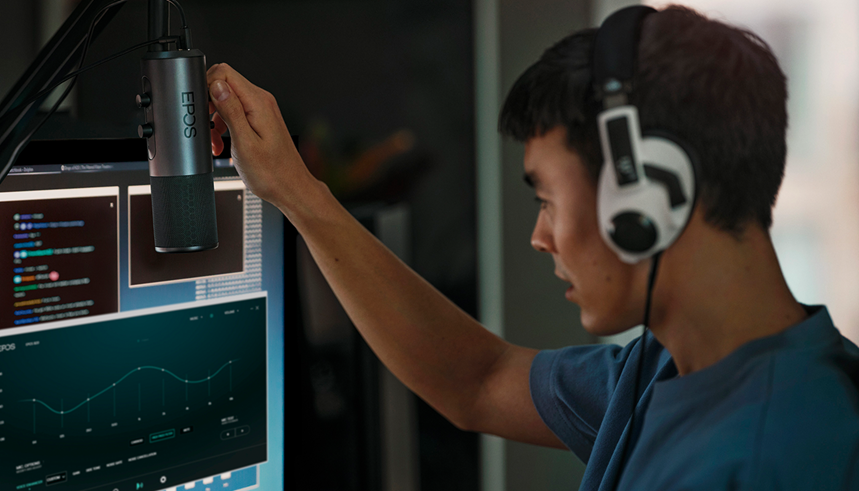With our world changing and now adapting to new situations, a need for new products arises. Podcasts, working from home, streaming or just videos in general are pushing people to look into microphones, cameras and a wide variety of accessories. This made EPOS’ announcement of B20 interesting. With EPOS focused on the importance of quality, their high end microphone could potentially be one of the best USB based options. However, with so many other products on the market, is B20 worth investing in or does it fall short where it counts?
While B20 features the gamer-esque packaging found on later products, it comes in a surprisingly thoughtful packaging. With no real buzzwords, just three quick statements designed to tell you the microphone is simple, well made and performs, it allows EPOS to say more with the interior.
Similar to some of the nicer products, EPOS opted for a magnetic flap to close B20’s box. By lifting the ribbon, players get their first glimpse of B20 held snugly in place by various forms of foam. The thoughtful design says a lot, really giving players the impression this is a nice product.

Unlike most microphones I’ve reviewed, B20 needs to be assembled. It’s a simple process, just three pieces (B20, base and screw) that take maybe two minutes to put together. I was actually able to screw it in place without a screwdriver, giving you an idea how simple it actually is. With the product assembled, a few elements of B20 stand out.
One thing that made me gravitate towards B20 is the clean look. It’s different from HyperX’s loud design meant to appeal to gamers or Movo’s rather traditional design. It’s minimal, with even the branding being fading away in the right light, that feels heavy, secure and well-constructed. EPOS also designed the base so B20 can tilt, though depending on the position it can also offer up to 360 degree turning. This is one thing that I loved about HyperX’s SoloCast, as it allows for more configurations or options to store when not in use. That being said, the design isn’t perfect.
Almost immediately I noticed the base is kind of wobbly. It isn’t something you’ll notice when B20 is placed on your desk, nor is a factor if you use a boom mic arm, though it takes away from the experience. The other is cable management. Most companies understand wires are ugly and attempt to create solutions to hide them. HyperX puts their connection on the back of the microphone to minimize it, Movo opts for an open back to feed the wire behind it, with EPOS creating a slot on the bottom of the stand. It looks nice, as it feeds out the back, though this design choice might cause confusion.

Contrary to every microphone I’ve used, B20 is meant to be used on the side. Specifically the one pictured on the right in the image above, not the one with the logo facing you. This choice can lead to some unexpected problems, like having issues seeing the mute indicator, confusion on wire placement and more. It also, unfortunately, follows several microphones issues with controls.
Not only is the mute indicator very small, potentially leading to mistakes, both gain and polar pattern are on the back. This can make accessing them somewhat difficult, an unfortunate choice for gain where you might want to edit that from time to time.
Performance was pretty good. I did multiple session with B20, along with a few videos where I used it with my voice coming in very clear. I could clearly make out what I was saying, with the only real downside was hearing some of the flaws in how I speak. This makes it good for a podcast, videos or just taking a Destiny raid to the next level. Though it’s best used in close proximity. At even a five foot range there was a sense of distance to my voice. It doesn’t distort it, just feels like you’re further back than you might intend. Beyond that, the only other thing to keep in mind is how it views settings.

Unlike some microphones I’ve reviewed, like the QuadCast, there is no set amount for gain and volume. These would change if I restarted my PlayStation 5 or computer. As a result, you’ll need to recalibrate it depending on the situation and setting. For some this can be annoying, especially if you forget, though easy access to the controls make it a breeze to fix or at least improve.
EPOS B20 Review Verdict
B20 is in an unusual spot for this product. In terms of look, it’s second to none of the microphones I’ve used. It also boasts a robust feature set that can work in a wide variety of settings, all while offering crisp and clear communication. These are all important, though small touches like the hard to see mute indicator, fixed positioning for wires and more hold it back. Still, personally, the pros outweigh the cons, it’s just an important consideration to have before purchasing.
[Editor’s Note: EPOS B20 was provided to us for review purposes.]
